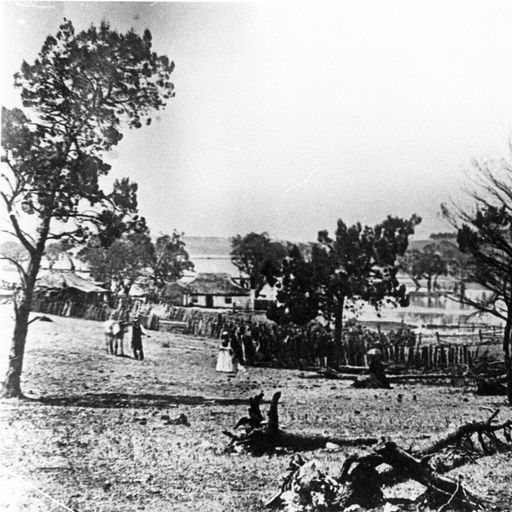
The first European settlers to the area were George EDWARDS and his family. Their house was built not far from here on the edge of Hume Reserve. (Photo)
The river was shallow here due to a large sand-bank and drovers bringing cattle from the Eastern States to Adelaide used the sand-bank to swim their cattle across the river, giving the name “Edwards Crossing” to this place. There were just 3 European settler families living in this area in the early 1870’s
Edward's Crossing in 1873 was a wild and desolate place.
The story of Murray Bridge is intertwined with the story of the building of the bridges. Go to the Building of the Bridges Point of Interest to find out more.
The Hume Pipe Company made concrete pipes on this site and gave its name to the current reserve.
Also this area on the Eastern side of the river (from the Road bridge and including Hume Reserve) is a place of significant cultural importance to the local Aboriginal community – the Ngarrindjerri.
The area is known as “Pomberuk” (crossing place) and is a registered Aboriginal cultural site (under the Aboriginal Heritage Act with a native title claim covering the area) with strong and unique cultural and spiritual significance including as a place of teaching and learning about the law, about country and the land. Important Aboriginal cultural material remains surviving on the site including camping places, middens and other culturally significant items are also found across the railway precinct and the Reserve. Indigenous plants, animals, fish, insects and all living things associated with the area are considered culturally significant (past and present) to Ngarrindjeri people.
Hume Reserve was the last permanent camp site of Ngarrindjeri people in Murray Bridge before being forced off this land by the Hume Pipe company.
Enhance your trails experience, for more information about South Australian trails including bike, walking, scuba and horse trails go the the SA Trails website: www.southaustraliantrails.com






